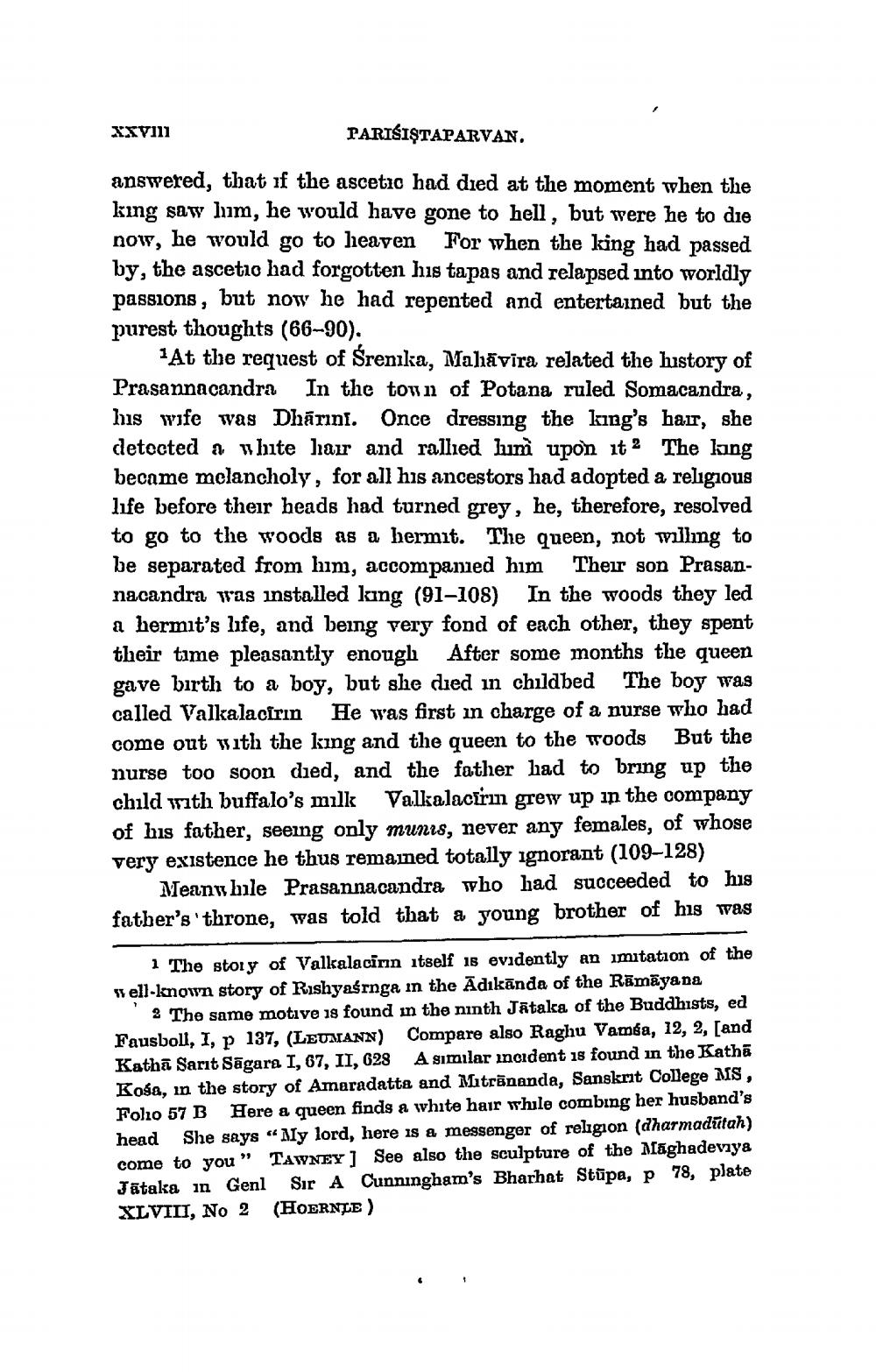________________
XXV111
PARIŠIŞTAPARVAN.
answered, that if the ascetic had died at the moment when the king saw him, he would have gone to hell, but were he to die now, he would go to heaven For when the king had passed by, the ascetio had forgotten his tapas and relapsed into worldly passions, but now he had repented and entertained but the purest thoughts (66-90).
At the request of Śrenika, Maliävira related the history of Prasannacandra In the town of Potana ruled Somacandra, his wife was Dhānni. Once dressing the king's hair, she detected a white hair and rallied lumì upon it 2 The king became mclancholy, for all his ancestors had adopted a religious life before their heads had turned grey, he, therefore, resolved to go to the woods as a hermit. The queen, not willing to be separated from him, accompanied him Their son Prasannacandra was installed king (91–108) In the woods they led a hermit's life, and being very fond of each other, they spent their time pleasantly enough After some months the queen gave birth to a boy, but she died in childbed The boy was called Valkalacirin He was first in charge of a nurse who had come out with the king and the queen to the woods But the nurse too soon died, and the father had to bring up the child with buffalo's milk Valkalacírın grew up in the company of his father, seeing only munis, never any females, of whose very existence he thus remained totally ignorant (109-128)
Meanwhile Prasannacandra who had succeeded to his father's 'throne, vas told that a young brother of his was
i The story of Valkalacinn itself is evidently an imitation of the well-known story of Rishyaśrnga in the Adikānda of the Rāmāyana
2 The same motive is found in the ninth JĀtaka of the Buddhists, ed Fausboll, I, p 137, (LEUMANN) Compare also Raghu Vamsa, 12, 2, (and Katha Sarıt Sāgara I, 67, II, 628 A similar incident is found in the Katha Koša, in the story of Amaradatta and Mutrānanda, Sanskrit College MS, Folo 57 B Here a queen finds a white hair while combing her husband's head She says “My lord, here is a messenger of religion (dharmadütah) come to you" TAWNEY] See also the sculpture of the Maghadeviya Jātaka in Genl Sir A Cunningham's Bharhat Stūpa, p 78, plate XLVIII, No 2 (HOERNLE)




